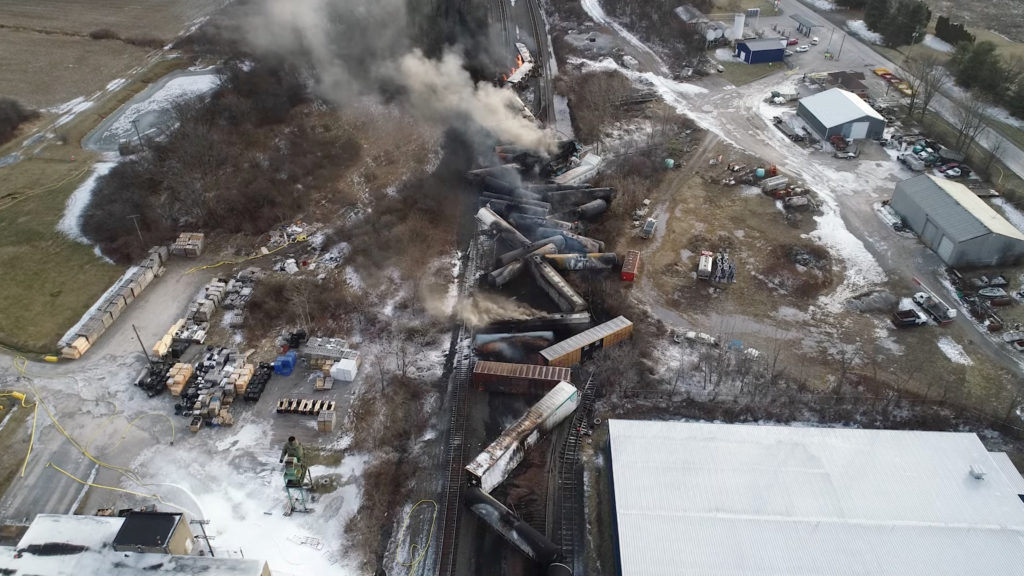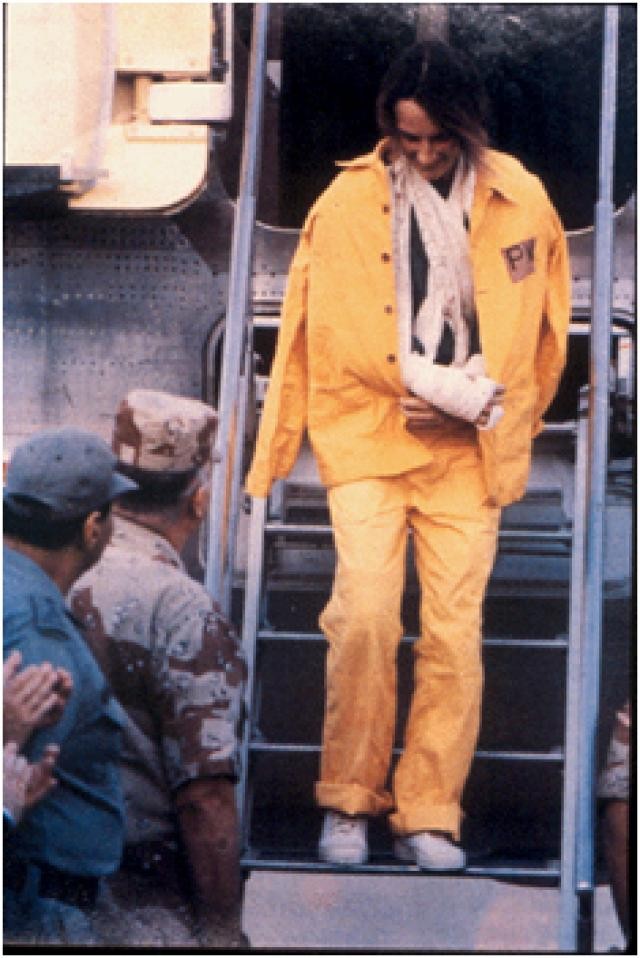Ohio Train Derailment: The Lingering Threat Of Toxic Chemicals In Buildings And Homes

Table of Contents
The Invisible Threat: How Toxic Chemicals Can Persist in Buildings and Homes
The chemicals released during the Ohio train derailment possess varying properties that influence their persistence in the environment and within buildings. Vinyl chloride, for instance, is volatile, meaning it readily evaporates into the air. However, it can also be absorbed into porous materials like wood, drywall, and insulation, leading to long-term contamination. Butyl acrylate, another released chemical, is less volatile but can still adhere to surfaces and potentially leach into groundwater. Understanding how these toxic chemicals infiltrate building materials is crucial for assessing the extent of the contamination.
Potential pathways of contamination include:
- Airborne contamination: Inhalation of volatile chemicals like vinyl chloride can lead to immediate and long-term respiratory problems, including shortness of breath, coughing, and potentially more severe conditions.
- Surface contamination: Chemicals can settle on surfaces, such as floors, countertops, and furniture. Direct skin contact can cause irritation, allergic reactions, or even absorption into the bloodstream. Children are particularly vulnerable due to their tendency to touch surfaces and put things in their mouths.
- Groundwater contamination: Leaking chemicals can infiltrate groundwater sources, potentially contaminating well water and basements. This presents a significant long-term health risk if this contaminated water is used for drinking, cooking, or showering.
Detecting these lingering chemicals can be challenging, requiring specialized equipment and expertise. Professional testing is paramount to accurately assess the extent of contamination and inform appropriate remediation strategies.
Health Risks Associated with Long-Term Exposure to Derailment Chemicals
Exposure to the chemicals released during the Ohio train derailment presents a range of potential health risks, both short-term and long-term. Vinyl chloride, a known carcinogen, is linked to an increased risk of liver cancer, brain cancer, and other serious health issues. Butyl acrylate can cause skin and eye irritation, respiratory problems, and potential long-term effects with chronic exposure.
Potential health problems associated with long-term exposure include:
- Respiratory issues: Coughing, wheezing, shortness of breath, and asthma exacerbations.
- Skin irritation and allergies: Rashes, eczema, and other allergic reactions.
- Cancer risks: Increased risk of various cancers, including liver and brain cancer (particularly with vinyl chloride exposure).
- Reproductive health concerns: Potential impacts on fertility and pregnancy outcomes.
Further research is needed to fully understand the long-term health consequences of this exposure, but the known hazards associated with these chemicals highlight the urgent need for thorough testing and remediation efforts. [Link to relevant scientific study 1] [Link to relevant scientific study 2]
Testing and Remediation Strategies for Contaminated Properties
Professional testing is vital to determine the level of contamination in homes and buildings affected by the Ohio train derailment. Several methods can be used to assess the presence of these toxic chemicals:
- Air quality testing: Measures the concentration of volatile organic compounds (VOCs) in the air, including vinyl chloride and butyl acrylate.
- Surface swab testing: Samples are taken from surfaces to analyze for the presence of residual chemicals.
- Water testing: Checks for the presence of chemicals in well water or other water sources.
Remediation strategies will vary depending on the level of contamination detected. These may include:
- Air purification systems: Using specialized HEPA filters to remove airborne contaminants.
- Surface cleaning and decontamination: Thorough cleaning and disinfection of contaminated surfaces.
- Removal and replacement of contaminated materials: In severe cases, this might involve removing and replacing contaminated building materials like drywall or insulation.
Governmental Response and Support for Affected Residents
The governmental response to the Ohio train derailment has included efforts to monitor air and water quality, provide health screenings, and offer support to affected residents. However, the long-term implications and the extent of the support needed are still evolving.
Available resources may include:
- Health screenings and medical support: Providing access to medical professionals specializing in toxic chemical exposure.
- Financial assistance for testing and remediation: Funding to help residents cover the costs of testing and cleaning their homes.
- Legal resources and avenues for compensation: Assisting residents in navigating legal processes to seek compensation for damages.
It's crucial for residents to stay informed about available resources and actively seek assistance if needed. [Link to relevant government website 1] [Link to relevant government website 2]
Conclusion
The Ohio train derailment presents a significant and lingering threat of toxic chemical contamination in homes and buildings across the affected area. The potential health risks associated with long-term exposure to vinyl chloride, butyl acrylate, and other released chemicals are substantial. Professional testing and appropriate remediation strategies are crucial to mitigate these risks and ensure the safety of residents. If you suspect your home or building may have been affected by the Ohio train derailment and the lingering threat of toxic chemicals, don't hesitate to contact environmental professionals for testing and remediation. Your health and safety are paramount. Remember to seek information on available governmental resources and support to navigate this challenging situation. Staying informed about the ongoing developments regarding the Ohio train derailment and its environmental impact is key to protecting your family's health and well-being.

Featured Posts
-
 Ines Reg Critiquee Dans Dals Trop Ouverte Natasha St Pier Elle Bien Protegee
May 12, 2025
Ines Reg Critiquee Dans Dals Trop Ouverte Natasha St Pier Elle Bien Protegee
May 12, 2025 -
 Mtv Cribs Architectural Marvels And Celebrity Homes
May 12, 2025
Mtv Cribs Architectural Marvels And Celebrity Homes
May 12, 2025 -
 Uruguay La Semana De Turismo Un Reflejo De Su Secularismo En America Latina
May 12, 2025
Uruguay La Semana De Turismo Un Reflejo De Su Secularismo En America Latina
May 12, 2025 -
 Skandal Z Udzialem Ksiecia Andrzeja Masazystka Ujawnia Szczegoly
May 12, 2025
Skandal Z Udzialem Ksiecia Andrzeja Masazystka Ujawnia Szczegoly
May 12, 2025 -
 Dispute Over Royal Honors Pvv Ministers Refusal For Asylum Volunteers
May 12, 2025
Dispute Over Royal Honors Pvv Ministers Refusal For Asylum Volunteers
May 12, 2025
Latest Posts
-
 Braunschweiger Neue Oberschule Details Zum Amokalarm Und Die Folgen
May 13, 2025
Braunschweiger Neue Oberschule Details Zum Amokalarm Und Die Folgen
May 13, 2025 -
 Families Of Gaza Hostages Endure Lingering Nightmare
May 13, 2025
Families Of Gaza Hostages Endure Lingering Nightmare
May 13, 2025 -
 Hope And Resilience A Fathers Message From Captivity
May 13, 2025
Hope And Resilience A Fathers Message From Captivity
May 13, 2025 -
 Gaza Hostage Crisis A Prolonged Nightmare For Families
May 13, 2025
Gaza Hostage Crisis A Prolonged Nightmare For Families
May 13, 2025 -
 Amokalarm Neue Oberschule Braunschweig Aktuelle Informationen Und Entwicklungen
May 13, 2025
Amokalarm Neue Oberschule Braunschweig Aktuelle Informationen Und Entwicklungen
May 13, 2025
